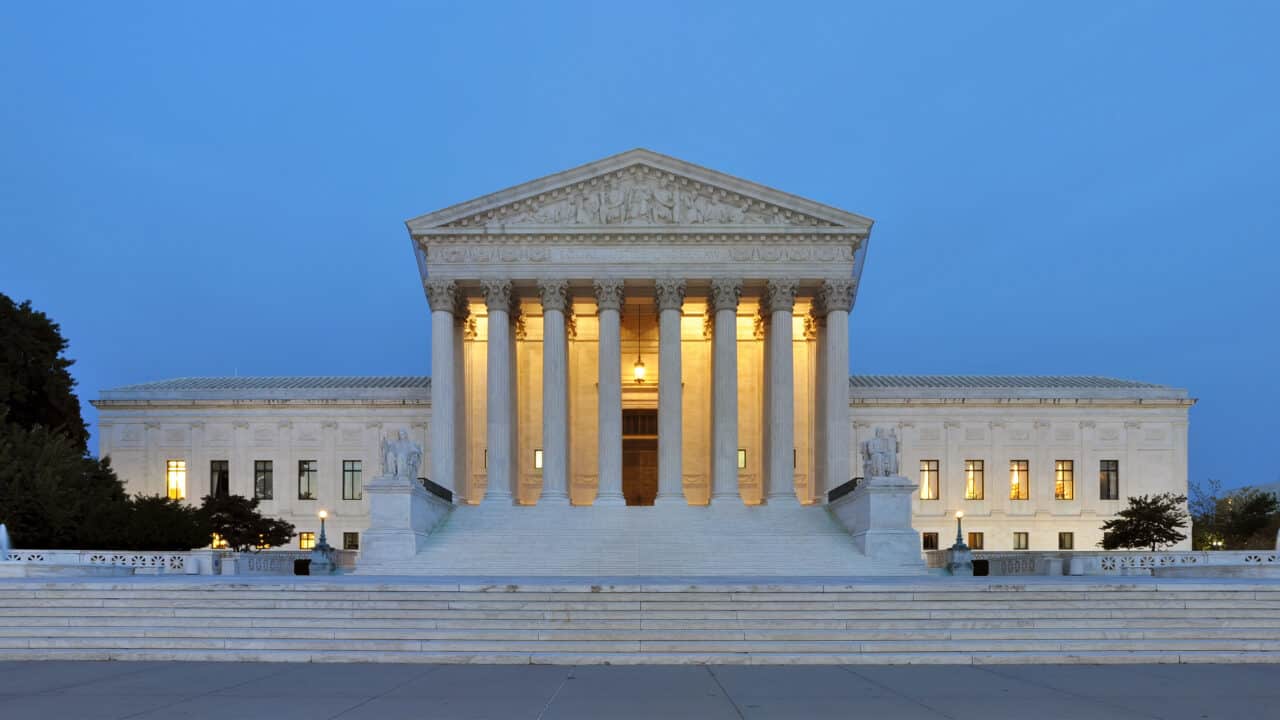 Panorama of United States Supreme Court Building at Dusk by Joe Ravi is licensed under CC-BY-SA 3.0.
Panorama of United States Supreme Court Building at Dusk by Joe Ravi is licensed under CC-BY-SA 3.0.
Civil asset forfeiture permits the government to seize an individual’s property without proving it was involved in a crime – or even that a crime occurred. The process has long been abused by authorities to bolster their budgets.
This unrestrictive mandate to seize property without due process may soon come to an end when the U.S. Supreme Court makes a ruling on Culley v. Attorney General of Alabama. The case will decide if those who have their assets seized have a right to a probable cause hearing after the seizure.
According to an Institute for Justice report titled Policing for Profit, 26 states received F ratings in forfeiture fund spending accountability. Moreover, the report noted that 25 states direct 95-100% of the revenues they collect through forfeitures towards law enforcement bodies and further 7 states dedicate 80-95% of aforementioned proceeds to law enforcement agencies. A similar report published by the Philadelphia Weekly, found that law enforcement bodies had directed the funds they collected from civil asset forfeiture on “submachine guns, uniform embroidery, web design services, and a lawn mower, along with tens of thousands of dollars in cash withdrawals.” The Institute for Justice estimates that people forfeited at least $63 billion to the government between 2002 and 2018.
The allocation of funds received from civil asset forfeitures to law enforcement agencies represents a clear conflict of interest. If law enforcement bodies understand that they can utilize nearly all of the funds received from civil asset forfeitures, they will be more willing to delay the forfeiture appeal process regardless if someone has been formally charged with a crime. This perverse incentive structure has led to erroneous and unjust forfeitures like the seizure of Gerardo Serrano’s vehicle.
In Serrano’s case, the government held on to “his vehicle for two years, without holding a hearing where he could contest the seizure.” Moreover, Serrano was required to pay “$3,800—10 percent of the car’s value—as a requirement to fight the move in federal court.” These obstacles deter many from contesting forfeitures and provide the government with protections for their wrongful seizures.
In summary, civil asset forfeitures have long been employed to unfairly seize the property of American taxpayers. The civil asset forfeiture appeal process is in dire need of reform if this inequity is to be resolved. Culley v. Attorney General of Alabama is an opportunity for The Supreme Court to remind the government that due process is not a privilege, but a right.

